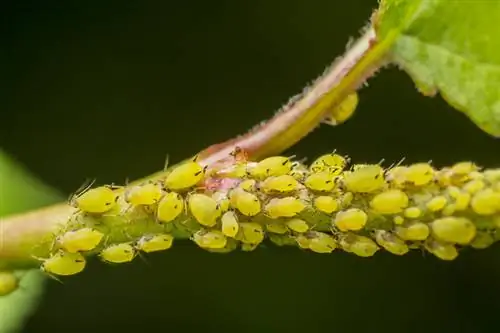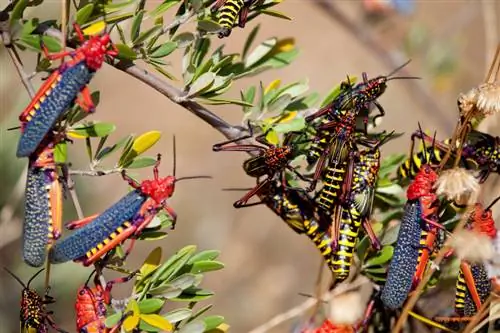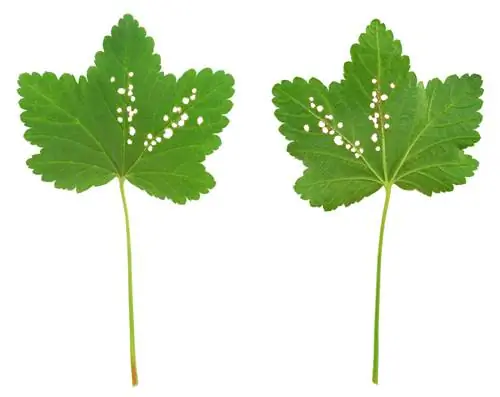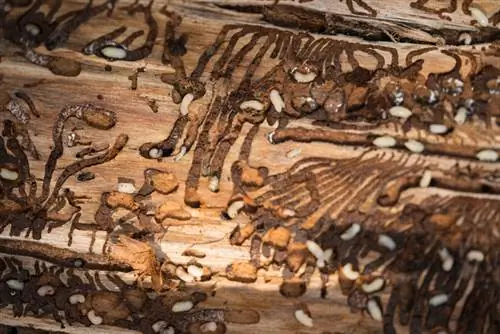- Author admin [email protected].
- Public 2023-12-16 16:46.
- Last modified 2025-01-23 11:20.
The Prunus domestica is a resilient species. With proper care and optimal location, it will last for many years. Fruits ripen from July. Find out in this article which pests feel comfortable on the plum tree.
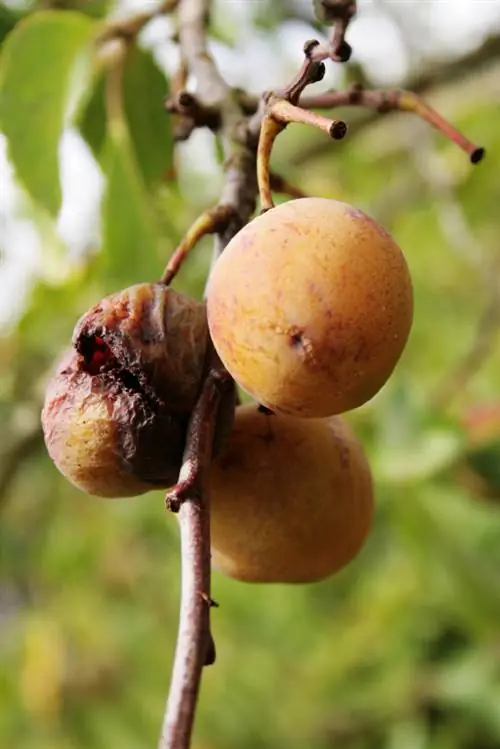
What pests occur on the plum tree?
Common pests on plum trees are the plum aphid, plum leaf bag gall mite and plum sawfly. Regular inspections, removal of infected parts and preventive measures such as pruning help to reduce pest infestation and keep the tree he althy.
Mealy plum louse
The Hyalopterus pruni is difficult to recognize. It is often only noticed in an advanced stage. Weakened and sick plum trees should be treated immediately.
Effects of this pest manifest themselves in various ways. On the one hand, the plum louse can promote an infestation with other pests. It also transmits viral diseases.
Features:
- Coloring: blue-grey to pink with white dust
- Size: 2 to 3 millimeters
- Occurrence in colonies
- from June
Distinguishing features:
In the advanced stage, plum aphids can be recognized by severe deformation and discoloration of the leaves.
Combat:
The destruction should take place in autumn at the latest. Commercially available products based on potassium soap (€7.00 on Amazon) are suitable.
Plum leaf marsupial gall mite
Pouch-shaped galls, approximately two millimeters in size, form on the leaves of the plum tree. These are deposited there by marsupial galls.
Distinguishing features:
- Leaf edges and tips with galls: white, yellowish, pink
- Gallen above with slit openings
- Mites in galls
During bud swelling, marsupial gall mites deposit their galls on leaves. From there, the mites attack the flower buds and suck them dry.
Combat:
Measures to eliminate pests are effective at this initial stage. There is no suitable plant protection product for allotment gardens. For this reason, affected leaves, branches and fruit buds must be removed. Adult female marsupial gall mites like to overwinter under the bark of trees. Remove loose pieces of bark early.
Note:
Regular checks are considered an effective prevention method. A grooming cut also protects.
Plum sawfly
The females of this species produce around 70 eggs per year. They place these directly in the flower calyxes in spring. This ensures that the offspring are well supplied with food. Small larvae destroy between four and six fruit calyxes. They then reveal themselves on the ground.
Distinguishing features:
- Fruits fall unripe from the tree
- clear eating marks and holes on plums
Combat:
In principle, no measures are necessary for mild infestations. It is possible to hang white glue boards directly in the plum tree during the flowering period.
Other pests
- Plum moth
-
Web Moth
Prevent instead of fight
Pests and diseases leave clear traces on green shoots, fruits and leaves. It is worth checking these for infestation at regular intervals. Pay attention to the following abnormalities:
- feeding marks
- Discolorations
- Deformations
- Nets
- Eggs
Tips & Tricks
Under no circumstances should you dispose of removed leaf, fruit and plant parts in the compost. In this way, there is a risk of renewed infestation the following year.


